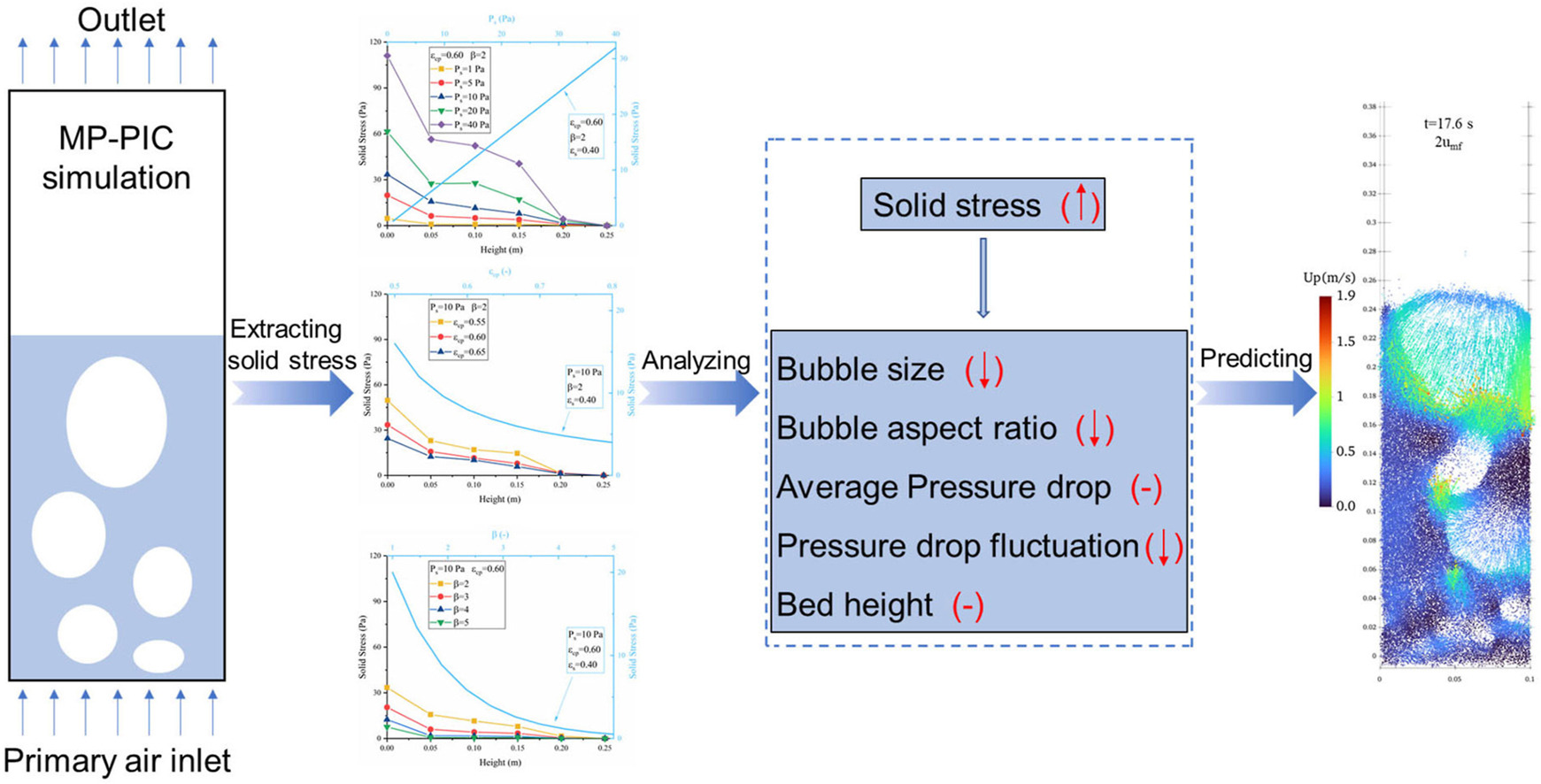• A detailed assessment of MP-PIC provides the impacts of the solid stress on the gas-solid flow in fluidized bed.
• Sensitivity analysis narrows down the solid stress model parameter space and identify the most sensitive parameter.
• The optimal parameter set obtained is proven to accurately predict different fluidization velocity gas-solid flow.
• Increasing solid stress will reduce bubble size, aspect ratio, and pressure drop fluctuations in bubble fluidized bed.
Gas-solid granular flows are widely used in multiple industrial applications. The Multiphase Particle-In-Cell (MP-PIC) method is increasingly recognized for its capability to efficiently model these industrial-scale gas-solid granular flows. The solid stress model is crucial in MP-PIC method; however, its influence on the simulation results has not been thoroughly investigated. In this work, the pseudo-2D bubbling fluidized bed is modeled using MP-PIC method in OpenFOAM, in which the experiment operates at twice the minimum fluidization velocity condition using glass bead as the bed material. We primarily investigate the variation of the inter-particle solid stress values in the bed and its influence on the simulation results across a range of solid stress model parameters. The simulation results including bubble size, aspect ratio, and pressure drop and bed height, have been compared with the corresponding experimental data and empirical correlation. Sensitivity analysis narrows down the solid stress model parameter space and identify the most sensitive parameter is the close-packed volume fraction of particles. Results demonstrate that solid stress plays a significant role in dense particle flow, making particles more dispersed. Increasing solid stress reduces bubble size, aspect ratio, and pressure drop fluctuations, with minimal impact on bed height and average pressure drop. By comparing simulations and experiments, the optimal parameters of the model are determined. Moreover, the obtained optimal parameters effectively predict gas-solid flow across varying fluidization velocities and three-dimensional fluidized beds. This study provides a detailed analysis of solid stress effects, offering a more comprehensive understanding of the parameters for future MP-PIC simulations and validations.

